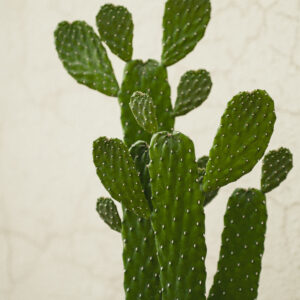Adenium obesum, also known as Desert Rose, is a unique and beautiful succulent from the Apocynaceae family. Native to the arid regions of Africa and the Middle East, the Adenium is renowned for its stunning, colorful flowers and thick, swollen trunk, which stores water during dry periods. It is a popular choice for arid and tropical gardens, as well as indoor cultivation in regions with a similar climate.
Care of Adenium Obesum:
Light: Adenium obesum thrives in full sun to partial shade. It requires at least 6 to 8 hours of sunlight daily to bloom and maintain its compact shape. When grown indoors, place the plant near a sunny window or provide artificial grow lights to ensure sufficient light exposure.
Temperature: Adenium prefers warm temperatures between 65°F to 85°F (18°C to 29°C). It is sensitive to cold temperatures and should be protected from frost and freezing conditions.
Watering: Adenium is a drought-tolerant plant and prefers well-draining soil. Allow the soil to dry out almost completely between waterings. Overwatering can lead to root rot, so it’s crucial to avoid keeping the soil constantly wet.
Humidity: Adenium is adapted to arid conditions and can tolerate low humidity levels.
Soil: A well-draining and sandy cactus or succulent potting mix is ideal for Adenium. The mix should allow excess water to escape quickly, preventing waterlogged conditions.
Fertilization: Fertilize Adenium during the growing season (spring and summer) with a balanced, diluted liquid fertilizer every 2-4 weeks. Reduce or stop fertilization during the winter when the plant is dormant.
Characteristics of Adenium obesum :
Flowers: The most striking feature of the Adenium is its trumpet-shaped flowers, which come in a variety of colors, including shades of red, pink, white, and sometimes yellow. The flowers are typically large and bloom in clusters during the growing season, adding a burst of color to the plant’s appearance.
Leaves: The leaves of the Adenium are thick, fleshy, and glossy. They are usually arranged in whorls at the end of the branches. In some varieties, the leaves may have a lighter green or variegated pattern, enhancing their ornamental appeal.
Growth Habit: Adenium has a slow to moderate growth rate. When young, it usually has a more upright growth habit, but as it matures, it forms a thick and succulent trunk with a swollen, bulbous base. The swollen base stores water, allowing the plant to survive extended periods of drought.
Landscape Use of Adenium obesum:
Adenium is often grown in outdoor gardens in regions with warm, arid, and tropical climates. It can be used as a focal point in xeriscapes or rock gardens.
In regions with colder climates, Adenium is commonly grown as an indoor or patio plant, where it can be moved indoors during winter or cold spells.
Overall, Adenium obesum (Desert Rose) is a visually stunning and low-maintenance succulent that adds a touch of exotic beauty to any garden or indoor space. Its striking flowers and unique swollen trunk make it a sought-after choice for succulent enthusiasts and collectors looking to showcase a captivating and drought-tolerant plant. However, it’s important to note that parts of the Adenium plant can be toxic if ingested, so it’s essential to keep it out of reach of children and pets.






